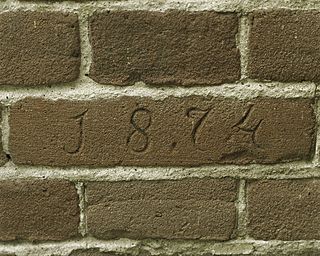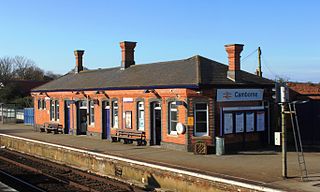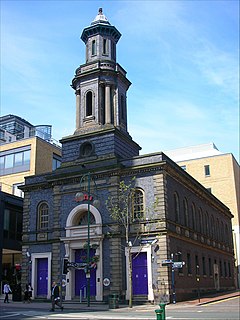 W
WA brick is a type of block used to build walls, pavements and other elements in masonry construction. Properly, the term brick denotes a block composed of dried clay, but is now also used informally to denote other chemically cured construction blocks. Bricks can be joined using mortar, adhesives or by interlocking them. Bricks are produced in numerous classes, types, materials, and sizes which vary with region and time period, and are produced in bulk quantities.
 W
WA bricklayer, which is related to but different from a mason, is a craftsman and tradesman who lays bricks to construct brickwork. The terms also refer to personnel who use blocks to construct blockwork walls and other forms of masonry. In British and Australian English, a bricklayer is colloquially known as a "brickie". A stone mason is one who lays any combination of stones, cinder blocks, and bricks in construction of building walls and other works. The main difference between a bricklayer and a true mason is skill level: bricklaying is a part of masonry and considered to be a "lower" form of masonry, whereas stonemasonry is a specialist occupation involved in the cutting and shaping of stones and stonework.
 W
WIn Iranian architecture, banna'i is an architectural decorative art in which glazed tiles are alternated with plain bricks to create geometric patterns over the surface of a wall or to spell out sacred names or pious phrases. This technique originated in Syria and Iraq in the 8th century, and matured in the Seljuq and Timurid era, as it spread to Iran, Anatolia and Central Asia.
 W
WA brick clamp is a traditional method of baking bricks, done by stacking unbaked bricks with fuel under or among them, then igniting the fuel. The clamp is considered a type of kiln. If the clamp is insulated by packing earth or mud around it, it becomes a scove kiln.
 W
WBrick Gothic is a specific style of Gothic architecture common in Northeast and Central Europe especially in the regions in and around the Baltic Sea, which do not have resources of standing rock, but in many places many glacial boulders. The buildings are essentially built using bricks. Buildings classified as Brick Gothic are found in Belgium, Netherlands, Germany, Poland, Lithuania, Latvia, Estonia, Kaliningrad, Denmark, Sweden and Finland.
 W
WBrick nog, is a construction technique in which bricks are used to fill the vacancies in a wooden frame. The walls then may be covered with tile, weatherboards or rendered. Generally the term "brick infill" is used instead of nogging in half-timbered construction.
 W
WA brickfield is a common location name in southeast England. Its name derives from a field where the topsoil was removed and the clay beneath was stripped, and mixed with chalk and ash to create bricks. The field could then be used for horticulture. In Kent it was often planted with fruit trees. Brickfields were mainly created from 1770 to 1881, when a new shaly clay was discovered at Fletton. This period coincided with the housing and railway boom in London and cheap river transport in Thames sailing barges. Brickfields existed elsewhere, but often the clay layer was deeper or there was no chalk in the proximity.
 W
WThe Brickpit Ring Walk is an urban nature park and walkway that serves as a water storage and frog habitat, located in the Bicentennial Park, in the Sydney Olympic Park, in western Sydney, New South Wales, Australia. Once a brick manufacturing site, the land was to be redeveloped as part of the site for the 2000 Sydney Olympic and Paralympic Games, however the 1992 discovery of the then endangered Green and Golden Bell Frog placed a hold on developments. The urban nature park and walkway was established in 2006.
 W
WBricks without straw is a phrase that refers to a task which must be undertaken without appropriate resources.
 W
WBrickwork is masonry produced by a bricklayer, using bricks and mortar. Typically, rows of bricks called courses are laid on top of one another to build up a structure such as a brick wall.
 W
WA brickworks, also known as a brick factory, is a factory for the manufacturing of bricks, from clay or shale. Usually a brickworks is located on a clay bedrock, often with a quarry for clay on site.
 W
WA brickyard, or brickfield, is a place or yard where the earthen building material called bricks are made, fired, and stored, or sometimes sold or otherwise distributed from. Brick makers work in a brick yard. A brick yard may be constructed near natural sources of clay or on or near a construction site if necessity or design requires the bricks to be made locally.
 W
WA clay pit is a quarry or mine for the extraction of clay, which is generally used for manufacturing pottery, bricks or Portland cement. Quarries where clay is mined to make bricks are sometimes called brick pits.
 W
WClinker bricks are partially-vitrified bricks used in the construction of buildings.
 W
WCream City brick is a cream or light yellow-colored brick made from a clay found around Milwaukee, Wisconsin, in the Menomonee River Valley and on the western banks of Lake Michigan. These bricks were one of the most common building materials used in Milwaukee during the mid and late 19th century, giving the city the nickname "Cream City" and the bricks the name "Cream City bricks".
 W
WDutch brick is a small type of yellow brick made in the Netherlands, or similar brick, and an architectural style of building with brick developed by the Dutch. The brick, made from clay dug from river banks or dredged from river beds of the river IJssel and fired over a long period of time, was known for its durability and appearance.
 W
WEngineering bricks are a type of brick used where strength, low water porosity or acid resistance are needed. Engineering bricks can be used for damp-proof courses.
 W
WA fire brick, firebrick, or refractory is a block of ceramic material used in lining furnaces, kilns, fireboxes, and fireplaces. A refractory brick is built primarily to withstand high temperature, but will also usually have a low thermal conductivity for greater energy efficiency. Usually dense firebricks are used in applications with extreme mechanical, chemical, or thermal stresses, such as the inside of a wood-fired kiln or a furnace, which is subject to abrasion from wood, fluxing from ash or slag, and high temperatures. In other, less harsh situations, such as in an electric- or natural gas-fired kiln, more porous bricks, commonly known as "kiln bricks", are a better choice. They are weaker, but they are much lighter and easier to form and insulate far better than dense bricks. In any case, firebricks should not spall, and their strength should hold up well during rapid temperature changes.
 W
WFire clay is a range of refractory clays used in the manufacture of ceramics, especially fire brick. The United States Environmental Protection Agency defines fire clay very generally as a "mineral aggregate composed of hydrous silicates of aluminium (Al2O3·2SiO2·2H2O) with or without free silica."
 W
WFly ash brick (FAB) is a building material, specifically masonry units, containing class C or class F fly ash and water. Compressed at 28 MPa (272 atm) and cured for 24 hours in a 66 °C steam bath, then toughened with an air entrainment agent, the bricks can last for more than 100 freeze-thaw cycles. Owing to the high concentration of calcium oxide in class C fly ash, the brick is described as "self-cementing". The manufacturing method saves energy, reduces mercury pollution in the environment, and often costs 20% less than traditional clay brick manufacturing.
 W
WDecorated ceramic tiles are paleochristian ceramic bricks with relief designs made by molding, used in the architecture of Late Antiquity in the south of the Iberian Peninsula, with two production centres identified in the valley of the Guadalquivir. The decorative motifs are mostly religious, although there are also zoomorphic and vegetal examples. Their function is not known, although use as funerary or, more recently, as ornamental elements in ceilings have been proposed.
 W
WLondon stock brick is the type of handmade brick which was used for the majority of building work in London and South East England until the growth in the use of Flettons and other machine-made bricks in the early 20th century. Its distinctive yellow colour and soft appearance come from the yellow local clay from which the bricks were made. London Stocks are still made in comparatively small quantities in traditional brickworks, mainly in Kent and Sussex, for heritage work, and machine-made versions are available for use where a cheaper approximation to the traditional product is acceptable. Red stock bricks are also fairly common, but only the yellow or brown coloured bricks are usually known as London stocks.
 W
WMedieval letter tiles are one-letter ceramic tiles that were employed in monasteries and churches of the late Middle Ages for the creation of Christian inscriptions on floors and walls. They were created by pressing stamps bearing a reverse image into soft clay, which was then baked hard, and they were used to form words by assembling single-letter tiles in the desired order.
 W
WMortar is a workable paste which hardens to bind building blocks such as stones, bricks, and concrete masonry units, to fill and seal the irregular gaps between them, spread the weight of them evenly, and sometimes to add decorative colors or patterns to masonry walls. In its broadest sense, mortar includes pitch, asphalt, and soft mud or clay, as used between mud bricks. The word "mortar" comes from Old French mortier, "builder's mortar, plaster; bowl for mixing" (13c.).
 W
WA mudbrick or mud-brick is an air-dried brick, made of a mixture of loam, mud, sand and water mixed with a binding material such as rice husks or straw. Mudbricks are known from 9000 BCE, though since 4000 BC, bricks have also been fired, to increase their strength and durability.
 W
WOpus africanum is a form of ashlar masonry used in Carthaginian and ancient Roman architecture, characterized by pillars of vertical blocks of stone alternating with horizontal blocks, filled in with smaller blocks in between.
 W
WOpus latericium is an ancient Roman construction technique in which coarse-laid brickwork is used to face a core of opus caementicium.
 W
WOpus mixtum, or opus vagecum and opus compositum, was an ancient Roman construction technique. It can consist in a mix of opus reticulatum and at the angles and the sides of opus latericium.
 W
WOpus reticulatum is a form of brickwork used in ancient Roman architecture. It consists of diamond-shaped bricks of tuff, referred to as cubilia, placed around a core of opus caementicium.
 W
WOpus spicatum, literally "spiked work," is a type of masonry construction used in Roman and medieval times. It consists of bricks, tiles or cut stone laid in a herringbone pattern.
 W
WOpus vittatum, also called opus listatum was an ancient Roman construction technique introduced at the beginning of the fourth century, made by parallel horizontal courses of tuff blocks alternated with bricks.
 W
WPolychrome brickwork is a style of architectural brickwork wherein bricks of different colours are used to create decorative patterns or highlight architectural features in the walls of a building. Historically it was used in the late Gothic period in Europe, and the Tudor period in England, and was revived in Britain in the 1850s as a feature of Gothic Revival architecture. Later in the 19th century and into the early 20th century it was adopted in various forms in Europe for all manner of buildings such as French eclectic villas, Dutch row houses, and German railway stations, and as far away as Melbourne, Australia, where the technique reached heights of popularity and elaboration in the 1880s.
 W
WRoman brick can refer either to a type of brick used in Ancient Roman architecture and spread by the Romans to the lands they conquered; or to a modern type inspired by the ancient prototypes. In both cases, it characteristically has longer and flatter dimensions than those of standard modern bricks.
 W
WRuabon is a village and community in the county borough of Wrexham in Wales. The name comes from Rhiw Fabon, rhiw being the Welsh word for "slope" or "hillside" and Fabon being a mutation from St Mabon, the original church name, of earlier, Celtic origin. An older English spelling, Rhuabon, can sometimes be seen.
 W
WStaffordshire blue brick is a strong type of construction brick, originally made in Staffordshire, England.
 W
WSticky rice mortar was invented in ancient China utilizing organic materials in inorganic mortar. Hydraulic mortar was not available in ancient China, possibly due to a lack of volcanic ash. Around 500 CE, sticky rice soup was mixed with slaked lime to make an inorganic−organic composite mortar that had more strength and water resistance than lime mortar. Sticky rice played a major role in maintaining the durability of the Great Wall as well as tombs, pagodas, and city walls. Sticky rice mortar had high adhesive strength, sturdiness, waterproofing capability, and prevented weeds from growing as crude mortar made of sticky rice and burnt lime created a seal between bricks that would rival modern cement in strength. During the Ming dynasty, brick-making techniques improved significantly in terms of quantity and quality of production. Since then, Great Wall sections were widely built with bricks, with lime mortar and sticky rice used to reinforce the bricks strongly enough to resist earthquakes and modern bulldozers while keeping the building intact. Modern chemists, through their research, identified amylopectin, a type of polysaccharide, or complex carbohydrate, found in rice and other starchy foods to appear to be responsible for the sticky rice mortar's strength and durability.
 W
WSuspensura is the architectural term given by Vitruvius to piers of square bricks that supported a suspended floor of a Roman bath covering a hypocaust cavity through which the hot air would flow.
 W
WTuckpointing is a way of using two contrasting colours of mortar in the mortar joints of brickwork, with one colour matching the bricks themselves to give an artificial impression that very fine joints have been made. In some parts of the United States and Canada, some confusion may result as the term is often used interchangeably with pointing and repointing.